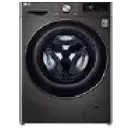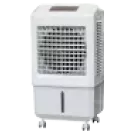The lifespan of an inverter battery typically ranges between 3 to 5 years, depending on the type of battery, usage patterns, and how well it is maintained. Regular deep discharges, excessive heat, and improper charging cycles can shorten the battery's life. High-quality batteries, such as a
good inverter battery, can last longer if used and maintained correctly. Maintaining an optimal charge level and protecting the battery from extreme temperature conditions are key to prolonging its life. Proper maintenance and regular checks will ensure that the battery continues to perform efficiently for years.
Factors affecting the life of an inverter battery- Depth of discharge: The more frequently a battery is deeply discharged, the shorter its lifespan.
- Charging cycles: Regular charging and discharging cycles wear out the battery over time. Poor charging habits can also reduce its lifespan.
- Ambient temperature: Batteries exposed to extreme temperatures, particularly heat, tend to degrade faster.
- Maintenance: Regularly topping up electrolyte levels (in lead-acid batteries) and keeping terminals clean are crucial for longer battery life.
- Battery quality: High-quality batteries generally last longer. A durable UPS battery or a 48V battery may offer extended lifespans compared to cheaper options.
- Usage load: The more energy intensive the devices you power with the battery, the more strain it places on the battery, reducing its life.
- Inverter efficiency: The efficiency of the inverter also affects battery performance. A highly efficient inverter ensures less battery drain.
Table of specifications | Feature | Description |
| Power output | 6,000 watts continuous power, higher surge watt capacity |
| Input voltage | 24V DC |
| Output voltage | 230V AC |
| Cooling system | Built-in cooling fan, heat sink for thermal management |
| Dimensions | Approx. 50 x 30 x 15 cm, depending on the manufacturer |
| Waveform | Pure sine wave for smooth and safe operation |
Key considerations for better inverter battery lifespan When considering the lifespan of an inverter battery, it is essential to think about factors such as the battery's capacity, charging cycles, and the inverter's load management. A
100Ah battery, for instance, offers a greater capacity and can handle more energy usage, which helps in extending its life. Choosing an appropriate inverter and battery combination based on your power needs can reduce stress on the battery. Keeping the battery in optimal conditions—both in terms of charging and environmental factors—also contributes to a longer lifespan. Additionally, using battery monitors can alert you to maintenance needs and prevent issues like overcharging or deep discharges that wear the battery faster.
How to extend the life of your inverter batteryTo extend the life of your inverter battery, start by keeping it in a cool and well-ventilated area. Excessive heat can significantly degrade battery performance and reduce its lifespan. Regularly check the electrolyte levels in lead-acid batteries and top them up with distilled water if needed. Avoid deep discharges by turning off appliances when not in use or during extended outages. Using the battery within its specified capacity, ensures that it’s not overworked. Ensure that the inverter is appropriately sized for your needs, as using an undersized inverter can strain the battery. Lastly, clean the battery terminals regularly to avoid corrosion, which can hamper performance.











